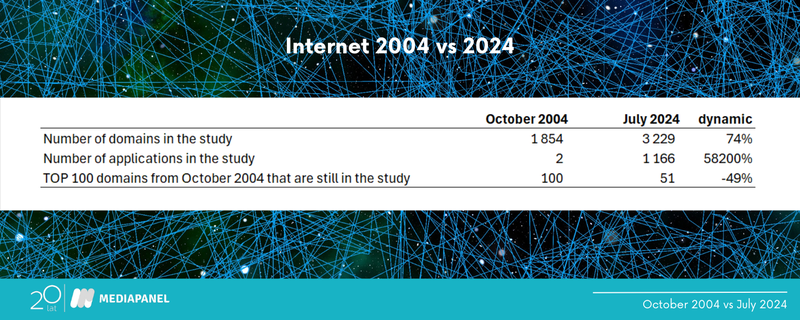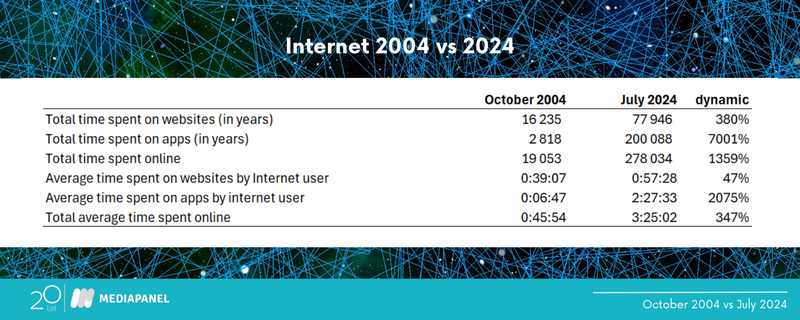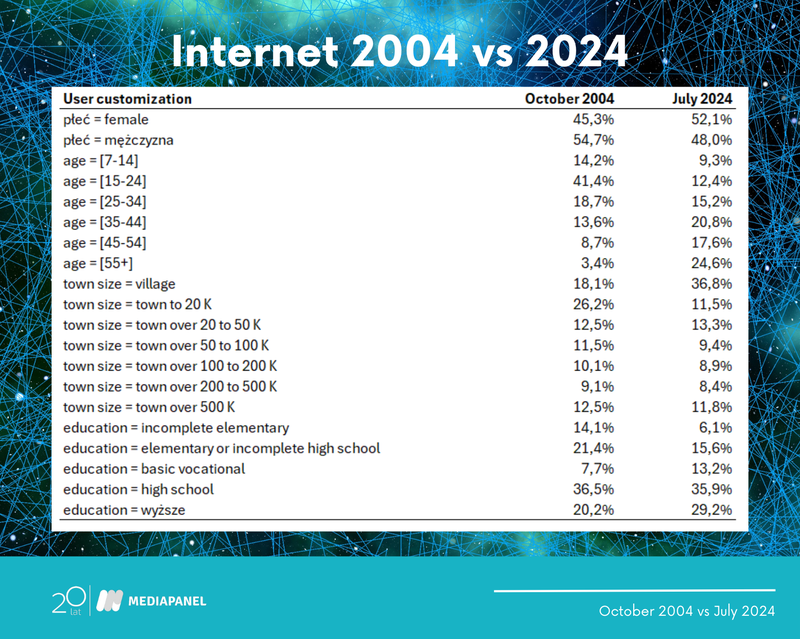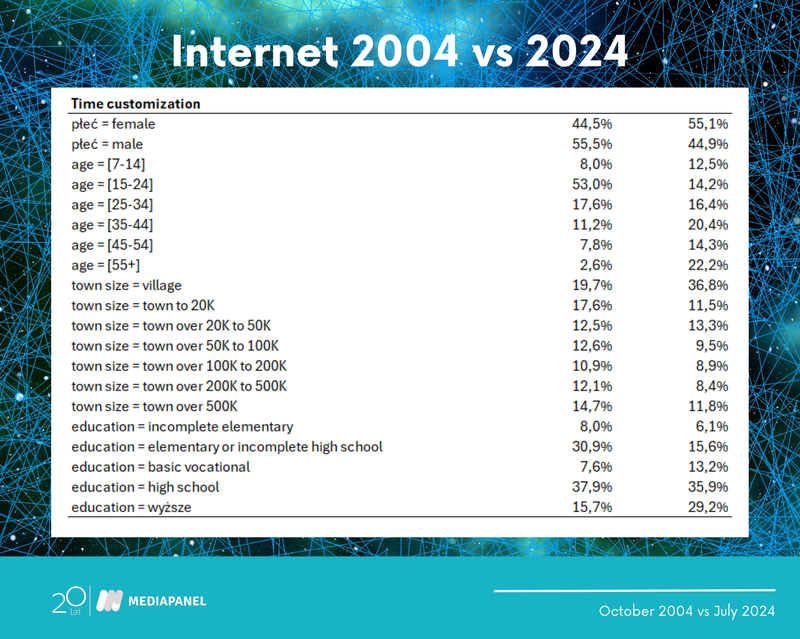
20 years of measurement - internet yesterday and today
In the analysis, we compared the first published results - for October 2004 - with the data for July 2024. What has changed?
Dynamic market growth
The last 20 years have brought a dramatic change in terms of the sheer size of the Internet market in Poland. This is reflected in the number of domains presented in the survey - it increased from 1,854 in October 2004 to 3,229 in July 2004. This represents an increase of as much as 74%. An even greater difference can be seen in the volume of applications covered by the survey - two decades ago only two were measured, while now Mediapanel presents results for 1,166. The balance of power in the market has also changed: only half of the top 100 domains from 20 years ago are still present in the survey.

More time on sites and applications
The spread of the Internet, its ubiquity and the multitude of devices on which it is available have naturally translated into an increase in the amount of time Internet users spend browsing domains and applications. The total time spent online increased by as much as 1,359% in the period under review, while the average time per Internet user increased by 347%.

More than three times as many Internet users
In October 2004, just over 9 million people used the Internet. The significant increase in their number (to nearly 30 million) is not surprising. However, we checked what changes have taken place in the profile of Internet users and the structure of the online audience, knowing that the demographic structure of the Polish population has also changed over two decades.
20 years ago, the Internet was primarily the domain of men - they accounted for almost 55% of all Internet users. Today, women make up the majority online, although the gender gap is less significant (52% women vs. 48% men). The largest share, in terms of age groups, was recorded in 2004 by Internet users aged 15-25 (41.4%). Today, they account for only 12% of the online audience, while the biggest age group represent 55+ (24.6%).
The structure of Internet users has also changed in terms of the size of the locality where Internet users live: 20 years ago, the dominant group was residents of cities up to 20,000 (26.2%), while today the most significant share belongs to those living in rural areas (36.8%). Both in 2004 and today, the largest percentage of Internet users has a high school education: their share is 36.5% and 35.9%, respectively.

The most active generation
Internet users between the ages of 15 and 24 not only made up the largest age group in the online audience structure in 2004, they were also the most engaged in the content they viewed online: they accounted for as much as 53% of all time spent online. Twenty years later, representatives of the same generation are still very active online: today's 35- to 44-year-olds generate 20.4% of total online time.



